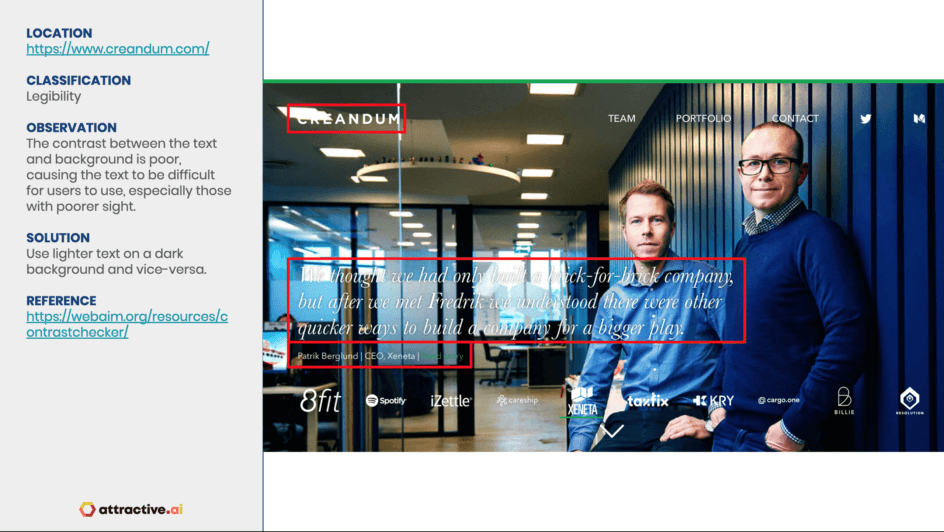Editor's note: this is a guest post written by Kristoffer Lawson, a Finland-based serial entrepreneur (Scred, Holvi, Solu Machines etc.) and currently Head of Product at Attractive.ai.
EU, accessibility, web standards, auditing, government. There, I just managed to lose 80% of the readers. If you somehow made it past that first sentence, the good news is that there is good news.
Ever since Tim Berners-Lee released the first website, the Web has been envisioned as connecting everyone in the world in a beautiful, messy hodgepodge of information. It has not yet achieved that goal, but the EU aims to take it a step closer.
EU legislation has not always had the greatest successes when it comes to digital services - the GDPR and Copyright directives being prime examples of problematic regulation - so I understand the collective rolling of eyes that must be going on in some sections of the industry.
Without getting into the debate of what the EU should be regulating and what not, it is clear, however, that accessibility, done well, can benefit everyone.
Closed caption broadcasts are great in noisy bars, accessibility ramps help those with prams or suitcases, accessibility tags on websites help catalogue sites and search engines to categorise sites properly. Furthermore, at some point all of us will become old, or have injuries which will hinder our ability to interact.
Apple's ex VP and author of Design of Everyday Things, Dan Norman, described this very matter in a recent blog post. There is also an argument to be made that taxpayers' money should only be used to build things which are truly usable by everyone. On the other hand, accessibility is not merely applying technical patches, but designing a clean, simple and understandable product helps everyone use your product better, disabilities or not.

Yet, complexity reigns.
While I would argue all sites and applications should aim to achieve accessibility goals, the EU has made it a requirement for all sites essential to the general population. Broadly, that means:
- Public sector sites — government, municipalities, public services - Banks, insurance companies, utilities and other critical infrastructure services - Other essential organisations with over 50% public funding
Note that this also applies to private companies from which public services or products are procured. Indirectly, this can thus have deep impact on the whole tech industry.
Consider, for instance, private dentists: their website needs to consider accessibility to remain competitive and attractive compared to those offered by the public sector.
What is required?
From a technical viewpoint, the EU recommendations are linked with the Web Consortium's Web Content Accessibility Guidelines (WCAG). This is a hefty list of things separated into three levels (A, AA, AAA). However, it is also pointed out that mere technical compliance is not enough, or is it the intention of the directive. Sites should be clear, usable and understandable beyond these technical requirements.
Each nation state implements the directive into national law in its own way, and exact sanctions are defined by the individual states. It's fair to say the expectation is not to see 100% technical compliance overnight, but rather to be able to show progress and a process to constantly improve accessibility. Indeed, nations are required to monitor the implementation of accessibility improvements and report every three years on progress.
Even if you are not working in the public sector, consider carefully the tools and services you are building: will any of your customers potentially be government offices? Will your tools be used there? How could you help them through this period?
So when do I need to do something?
Yesterday. Websites launched after 23rd September, 2018 need to be compliant by the same date in 2019. That leaves little more than three months to get things in order. Older websites get one extra year of breathing room, having to be compliant by September 2020.
Crap
Yup. A lot of people are panicking right now. The EU Parliament site itself is full of problems, which I'm sure the new MEPs will enjoy taking responsibility for.
The good news is there are a number of tools and services that can help, remembering that getting the process going is the most important step. Here are some:
- The most ubiquitous of tools is Google's Lighthouse, which is built into Chrome. It looks at multiple technical aspects of a page and can be used to find a number of problems. The data can sometimes be daunting, but it's free and offers a good place to start. Simply open 'Developer Tools' in Chrome and click on the 'Audits' tab.
- Remaining in the Chrome space, there is also a free plugin called 'axe' by deque which specifically focuses on accessibility.
- For more comprehensive audits there are commercial tools like Siteimprove from Denmark, which is a bit like Lighthouse on steroids, or our own Attractive.ai which is a robot UX expert, simulating human interaction and generating suggestions and observations for your next sprint.
And now for the fun part
Since many reading this might be working in the startup world, I thought it could be a good idea to see how friendly that place is to diverse users.
Specifically, I decided to look at one of the most essential services for many tech entrepreneurs: venture capital. I let our robot, Poe, score ten of the leading European VCs, to see how they faired. The ranking order is:
1) Atomico: 96 / 100 2) Wellington-partners.com: 94 3) Lakestar.com: 92 4) Creandum: 91 5) Hvventures.com: 91 6) IndexVentures: 89 7) Accel.com: 87 8) Northzone.com: 87 9) Amadeuscapital.com: 86 10) Balderton: 83

Keeping in mind that Poe looks at many more things than just accessibility, the top VCs have done a fairly good job with their online presence, with all but Balderton scoring above average.
Worryingly, from a public sector point of view, they actually did better than a number of political parties we recently looked at as well. I'm positively surprised to see at least the big money people doing so well here.
Final words
While it may seem like this will require a lot of work for everyone, the hit can be minimised by putting in some simple processes and utilising available tools. 15% of the world's population suffer from some form of disability, and many more will be temporarily disabled.
Not only that, but good, clean sites benefit both the users, and the business.
Investing the small amounts needed to improve your products will be likely to return that investment rapidly.

Featured image credit: Atomic Taco on Flickr



Would you like to write the first comment?
Login to post comments